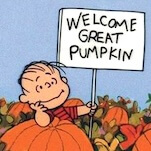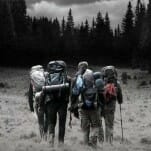The Controlled Chaos of Dennis Hopper

Certain actors are described as chameleons, doing everything they can to disappear as fully into a role as possible. They dive into accents, costumes, makeup to attempt to become one with the character and remove themselves as the actor. Others have adopted such an ubiquitous personality that casting them is a decision based on their persona, where you know the audience will largely be watching the actor and not so much the transformation of the character. Somewhere in the middle exists Dennis Hopper, a performer whose off-screen behavior went beyond what most characters could contain—who was known as much for his history outside of his films as for his performances in them.
However, rather than resting on his laurels and allowing Hollywood to lazily typecast him as the maniacal outsider—as was the case at one point in his early career—Hopper constantly found ways to mold himself into a variety of parts, channeling the baggage he brought with him into performances that often benefit from greater knowledge of the man behind the mask. He took what could have been a detriment and made it a strength, becoming an actor so unique that a casting director looking for a “Dennis Hopper type” for their new film only had one realistic option: Dennis Hopper. This gift was demonstrated at its maximum impact across a quartet of performances he gave in 1986, the year responsible for his only Oscar nomination for acting and his cementing in cinematic history as one of the most fearsome on-screen villains of all time.
Coming into the mid-1980s, Hopper was somewhat on the outs, trying to make his way back into the Hollywood fold. To chart his epic path of burning bridges and causing harm to himself would take hundreds of pages (many of them included in Peter Biskind’s excellent Easy Riders, Raging Bulls), but things had been difficult for the Kansas-born, classically trained thespian since his days on 1958’s From Hell to Texas with director Henry Hathaway. The old-school Hathaway treated his actors like cattle, and Hopper’s resistance led to reels and reels of film being wasted before he finally relented to his director’s demands. After the shoot, Hathaway got the calls out around Hollywood to ensure that Hopper was essentially unhirable, leading him to toil away in episodic television for the better part of the next decade until a family friend by the name of John Wayne got Hopper a part on his latest feature, The Sons of Katie Elder, working for a director by the name of…Henry Hathaway.
Not too long after this, Hopper teamed up with Peter Fonda to change the face of American culture for good. Written by the duo and Terry Southern, and directed by Hopper, 1969’s Easy Rider was as momentous a shift in the zeitgeist as cinema is capable of achieving, but its counterculture mentality was quickly appropriated by the mainstream. The resulting years would demonstrate that Hollywood only wants someone like Dennis Hopper when they’re trending and when they can be controlled, something he certainly wasn’t on his directorial follow-up, The Last Movie. Appropriately titled, the chaotic shoot and abstract final product irritated studios and mystified audiences to the point that Hopper was again shut out of Hollywood. While he found work for the next decade in low-budget and European films, trading on his reputation by playing oddball Americans in films like Mad Dog Morgan and The American Friend, it wasn’t until a scene-stealing supporting turn in Apocalypse Now that Hopper had enough clout to begin making his return to the mainstream.
In the early 1980s, a particularly intense drug-fueled bender landed Hopper in a rehabilitation program, finally getting treatment for the substance abuse that had partly fueled his falling out with the industry. By 1986, the now-sober Hopper’s reputation was one that would make it difficult for audiences to see him as a character, as they were so aware of his notoriously troubled history both off and on-screen. As was the case with his earlier films, however, certain directors knew how to take advantage of what a gift this kind of cultural standing could be, planting Hopper into roles where having him show up in a scene would give an immediate sensation and awareness of who this character is.
This trick is utilized efficiently in The Texas Chainsaw Massacre 2, Tobe Hooper’s sequel to his 1974 horror masterpiece that took a similar hold on the country to that of Easy Rider. Emphasizing a black comedy approach befitting ‘80s sensibilities, the film stars Caroline Williams as Stretch Brock, a DJ who runs afoul of the cannibalistic, chainsaw-wielding family introduced in the first film. Hopper shows up as Lieutenant Boude “Lefty” Enright, the uncle of two of the victims from the first film, who has been trying to track down their killers for the last 13 years.
Despite receiving top billing, Hopper is more of a supporting character here—as the film focuses primarily on Stretch—but in the casting of Hopper, Hooper knowingly gives the audience a fascination with Lefty they wouldn’t have had with another actor. From the moment we meet Lefty, we can tell something is off about him, and each scene he’s in gives further hints to the bloodlust lurking underneath his no-nonsense demeanor. Suiting the way that Hooper dials the film’s eccentricities up to 11, The Texas Chainsaw Massacre 2 climaxes with a gory jamboree at the cannibal family’s lair: An underground carnival area with neon lights and piles upon piles of bloody human remains.
While Stretch is being captured and assaulted by the family, Hopper is in the background, wielding a heavy-duty chainsaw to systematically destroy their lair, screaming “I’ll take you to hell!” Just as things look like they’re reaching the end for Stretch, Lefty shows up for a chainsaw duel with Leatherface, in one howling riot of a good time. If you don’t want your Texas Chainsaw Massacre movies to end with a chainsaw fight, you should get checked out. While Lefty is gone for most of the film, this showdown is a fist-pumping moment specifically due to the casting of Hopper, someone whose mania we can spot the moment we’re introduced to him—we understand the character even if there’s not actually that much of him on the screen.
This idea is employed to even greater impact in River’s Edge, Tim Hunter’s film centered on a group of teens (including Crispin Glover, Keanu Reeves and Ione Skye) in a Northern California town who have an oddly indifferent reaction when their friend John (Daniel Roebuck) nonchalantly murders his girlfriend Jamie (Danyi Deats). Neal Jiminez loosely based his script on a real-life murder, and there’s something specifically unsettling in the authentic way that River’s Edge captures the pervading ennui of eking out an existence in this type of go-nowhere place. With no hope for anything beyond the sad day-to-day that you see around you, what point is there in caring about anything?
-

-

-

-

-

-

-

-

-

-

-

-

-

-

-

-

-

-

-

-

-

-

-

-

-

-

-

-

-

-

-

-

-

-

-

-

-

-

-

-








































